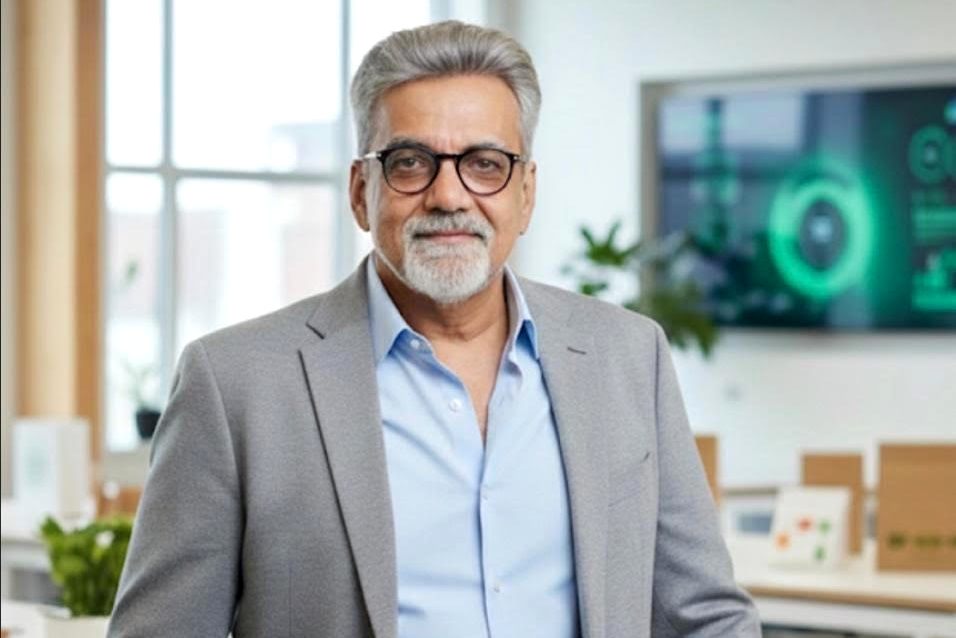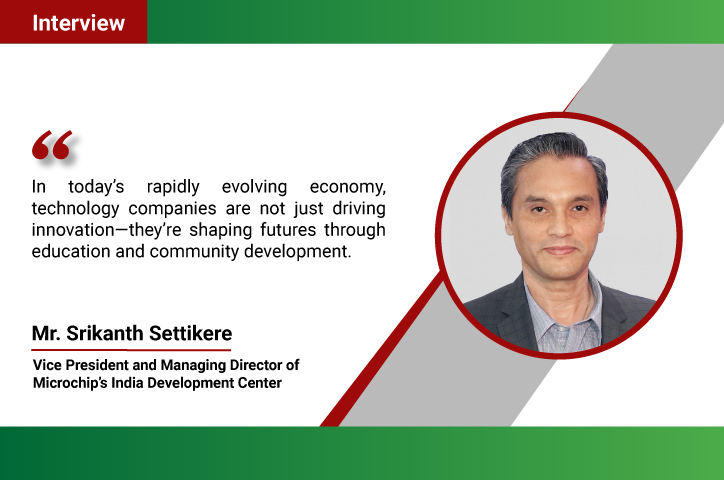India’s Tier 2 and 3 cities are no longer on the periphery of progress—they are fast emerging as vital engines of the country’s economic and social growth. Contributing nearly 45% to the nation’s industrial output and 40% to exports, these cities are home to a significant portion of India’s population and play an increasingly integral role in shaping its development trajectory. However, despite their growing significance, they have remained rather underserved by mainstream development and organised CSR interventions.
In this insightful interview with TheCSRUniverse, Lavanya Jayaram, Regional Director, South Asia at AVPN, delves into how targeted CSR efforts are now driving transformation across these smaller cities. She highlights how companies are moving beyond one-size-fits-all approaches to deliver locally-relevant, impact-driven solutions in areas such as healthcare, education, skill development, and women’s empowerment. Jayaram also discusses emerging CSR trends—from innovative financing and tech-led strategies to the importance of community partnerships—underscoring the need for inclusive, strategic models that align with both local aspirations and global goals. As India’s development narrative deepens, Tier 2 and 3 cities are clearly at the heart of the next wave of progress.
Read along for deeper insights:
Q. Until recently, tier 2 and 3 cities didn’t get enough attention of organised CSR interventions. Could you tell us how CSR in driving transformation in tier 2 and tier 3 cities now?
A. Through Corporate Social Responsibility (CSR), companies are driving localised development and addressing critical challenges; contributing to balanced regional development, helping Tier 2 and Tier 3 cities thrive while reducing inequalities across urban and rural areas. Tier 2 and 3 cities contribute to 45% of India’s industrial output and 40% of exports. Nearly 41% of India’s population lives in these smaller cities, making them key areas for targeted CSR efforts.
Many CSRs focus on skill development, healthcare, education, and infrastructure to drive growth in smaller cities. For example, the Tata STRIVE initiative offers vocational training to young people in Tier 2 and Tier 3 cities, helping them gain employment in industries like manufacturing and services.
Similarly, AVPN member, Axis Bank Foundation (ABF) focuses on sustainable livelihoods, skill development, and education in India’s Tier 2 and 3 cities. It supports small farmers, artisans, and micro-entrepreneurs by promoting sustainable practices and market access, while offering vocational training for youth and women to enhance employability.
By offering holistic solutions for issues, such initiatives are helping to transform smaller cities into vibrant, self-sustaining communities that are resilient, inclusive, and contribute significantly to India’s overall development. Their localised focus ensures that social and economic benefits are more evenly distributed, thus preventing urban migration and reducing the strain on larger metros.
Beyond that, CSR convenes multiple stakeholders, building bridges of trust that are essential for identifying and developing impactful investment opportunities.
Q. What opportunities do tier 2-3 cities present for CSR that may not be as prevalent in larger cities?
A. Tier 2 and 3 cities in India have significant unmet needs in healthcare, education, and infrastructure, and there is a lot for CSR to do. Interventions in these areas can create visible, transformative changes, sometimes, possibly even in shorter time frames.
These cities allow for a hyper-local focus, where solutions can be tailored to specific community needs, fostering stronger local ownership and participation. Second, they're hotbeds of grassroots innovation, with local entrepreneurs often developing creative, context-specific solutions that CSR efforts can support and scale. Moreover, with fewer layers between companies and communities, employees can engage more directly and meaningfully in CSR initiatives. This direct involvement not only enhances the effectiveness of programs but also deepens employees' understanding of local issues.
Another key advantage is cost-effectiveness. Lower operational costs in tier 2 and 3 cities allow for more resources to be channelled directly into impactful programs, making it more conducive for high impact CSR initiatives in tier 2 and 3 cities.
Q. How have societal demands for corporate leadership in social and environmental causes influenced the way companies think through their CSR initiatives, especially in tier 2 and tier 3 cities?
A. India's vibrant civil society has played a crucial role in shaping corporate behaviour. The growing awareness of social and environmental issues, coupled with the increasing expectations of consumers and investors, has compelled companies to adopt a more responsible approach to their operations.
In tier 2 and tier 3 cities, this societal pressure is particularly pronounced. Local communities, more acutely impacted by challenges like climate change and healthcare, demand greater corporate involvement. Societal demands for corporate leadership in social and environmental causes have pushed companies to adopt more community-driven approaches in their CSR initiatives, especially in Tier 2 and Tier 3 cities. Local communities now play a central role in identifying and addressing their own challenges, ensuring CSR efforts are tailored to their specific needs and values. This shift towards greater community involvement fosters collective ownership, empowerment, and long-term sustainability, making CSR projects more impactful and responsive to local priorities.
As a result, companies operating in these cities deliver more strategic and transparent CSR initiatives that are aligned with their core business. They also have access to local communities— lending the opportunity to build long lasting partnerships and fostering trust.
Q. Could you share some examples of CSR models that go beyond ad-hoc, project-based activities to achieve long-term impact? How are these models being adapted to address the unique needs of tier 2 and tier 3 communities?
A. CSR initiatives are becoming more localised, with companies tailoring programmes to specific regional needs and cultural contexts. Along with building capacities of non-profits for long-term sustainability, they are also involving local communities in design and implementation for better outcomes. Some exemplary models adopted by AVPN members for long-term impact include:
- Strategic CSR Programmes: Tata Trusts
The Tata Trusts, one of India's largest philanthropic organisations, have implemented strategic CSR programs across education, healthcare, and rural development. They have transformed several tier 2 and tier 3 cities, by establishing schools, hospitals, and vocational training centres.
- Social Impact Bonds: Piramal Foundation
The Piramal Foundation has been involved in pioneering social impact bonds (SIBs) in India. They have partnered with governments and NGOs to implement SIBs in areas such as education and healthcare, attracting private sector investment to address social challenges. They have taken the bold step in adopting regions in Aspirational Districts which are typically harder to reach and to service, going that extra mile.
- Partnerships with NGOs and Social Enterprises: Reliance Foundation
The Reliance Foundation collaborates with NGOs and social enterprises in tier 2 and 3 cities to address specific local needs in education, healthcare, and disaster relief.
Q. In what ways can corporates develop more strategic and inclusive CSR programs to meet both local and global expectations? Can you share any case studies or success stories from tier 2 or tier 3 cities?
A. When CSR is aligned with the core business strategy, it allows companies to leverage their core competencies to address social and environmental challenges.
For example, GreenKraft Producer Company Ltd, an initiative by Women on Wings' partner Industree Foundation, empowers 250 women in Thanakkankulam village, Madurai, to earn regular income by producing handcrafted banana fibre baskets for IKEA. The initiative recognises the relevance of local artisans and takes their craft to global markets while aligning with IKEA’s core business and their commitment to social impact.
CEAT Tyres (RPG Foundation), as part of their Swayam initiative empowers women from marginalised backgrounds through driving skills to provide them employment opportunities as commercial drivers.
The Lenovo-Motorola Skills Academy offers training in mobile and laptop repair, customer service, and retail management, helping participants from tier 2 and 3 cities secure employment or start businesses.
Visa Foundation prioritises the growth of gender diverse and inclusive small and micro businesses and supports interventions on digital and financial inclusion.
Q. What role does collaboration with local stakeholders and communities play in enhancing the effectiveness and reach of CSR initiatives?
A. Collaboration with local stakeholders and communities is like building a bridge between the corporate world and the communities it serves.
Engaging local stakeholders ensures that CSR programmes are aligned with the needs and priorities of the communities. This creates a shared ownership which adds to the initiative’s sustainability. Additionally, collaboration can lead to the development of more innovative and environment-friendly solutions, as local stakeholders often have valuable insights and expertise.
Partnerships with local communities can help to build trust and goodwill, enhancing companies’ reputation and social licence to operate. This can lead to increased support for business activities and a more favourable operating environment.
Q. Looking ahead, what trends or changes do you foresee in the field of CSR?
A. In recent years, CSR has undergone a shift from charity-based models to long-term impact-driven initiatives aligned with the Sustainable Development Goals (SDGs) and companies’ ESG goals. Overarching issues such as climate change, gender, and healthcare are increasingly integrated in program outcomes. To unlock higher capital and create impact, companies are looking at:
Innovative Financing and Increased CSR Capital: Companies will increasingly adopt blended finance models, combining public, private, and philanthropic funds to scale projects in healthcare, renewable energy, and social infrastructure. This approach will be vital in expanding beyond the current US$ 4.5 billion CSR contributions, helping to bridge SDG financing gaps and drive nation-building efforts.
Strengthened Public-Private Partnerships: Collaboration between corporations, government, and NGOs is expected to grow, particularly in health, education, and rural development sectors. Integrated, cross-sectoral partnerships will become more common, amplifying the impact of CSR initiatives.
Tech-Driven CSR: Digital transformation will play a bigger role in CSR, with AI, data analytics, and digital platforms enhancing program transparency, impact measurement, and operational efficiency. This will enable companies to drive more targeted and effective interventions.
Localised CSR: Companies will continue to focus on region-specific issues, such as water scarcity or women’s entrepreneurship, tailoring their CSR initiatives to meet local needs. This approach fosters deeper community engagement and delivers more sustainable outcomes.















.jpg)




